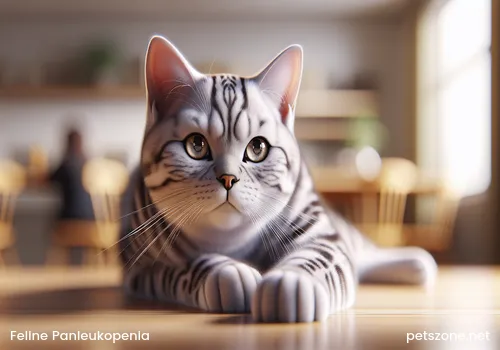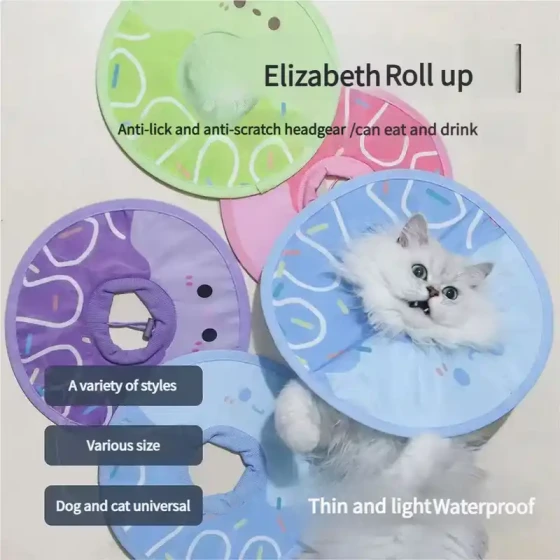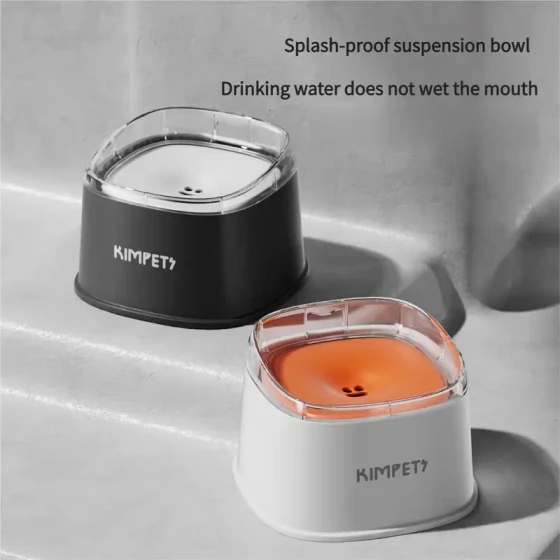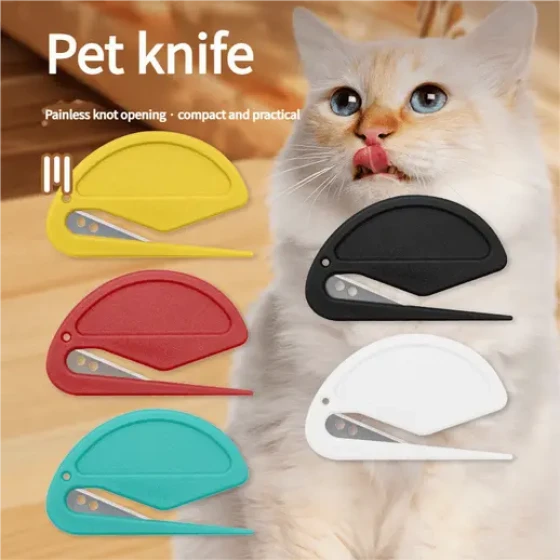Feline Panleukopenia Symptoms_Comprehensive Analysis of Causes, Prevention, and Key Points of Treatment
Feline panleukopenia, scientifically known as Feline Panleukopenia (FP), is an acute, highly contagious viral disease caused by Feline Parvovirus (FPV). This virus attacks and destroys rapidly dividing cells in cats, especially bone marrow, lymphoid tissue, and intestinal cells, causing a sharp drop in white blood cells, severe immune suppression, and a series of digestive symptoms. In severe cases, it can be life-threatening, particularly with high mortality in kittens. Early detection of symptoms and active treatment are key to improving survival rates. Vaccination is the most effective method of preventing feline panleukopenia.

What is Feline Panleukopenia? Why Is It So Severe?
The feline panleukopenia virus (FPV) is no "gentle fellow"; it is a non-enveloped single-stranded DNA virus with extremely strong viability. It can survive in the environment for months or even over a year and is resistant to many commonly used disinfectants. It mainly targets the rapidly dividing and growing cells inside cats, such as bone marrow, lymph nodes, intestinal villus cells, and developing fetal cells.
When infected with FPV, a cat's white blood cells drastically decrease like a "big dive," directly weakening the cat's ability to resist bacterial, viral, and other "foreign invaders." Meanwhile, the virus's destruction of intestinal cells damages the intestinal barrier and causes severe digestive symptoms. It's like the cat's "city walls" have been breached, and the internal "guards" (white blood cells) are heavily lost, naturally making it easy for various secondary infections to "take advantage of the chaos," complicating and worsening the disease.
What Are the Main Symptoms of Feline Panleukopenia?
The symptoms of feline panleukopenia vary a lot; mild cases might only show slight lethargy, while severe cases may die suddenly, especially in kittens. The incubation period usually ranges from 2 to 7 days, up to 14 days at most. Once onset occurs, common symptoms include:
- Depression, loss of appetite, or complete refusal to eat: The cat becomes listless and uninterested even in its favorite "little fish snacks."
- Fever or hypothermia: Body temperature may rise above 40°C, and hypothermia may appear in the later stages of illness.
- Vomiting: Common in the early stages of feline panleukopenia; vomit may be yellow-green, and vomiting can occur even without food intake.
- Diarrhea: Usually appears 1-2 days after vomiting begins; feces may be loose, watery, or even bloody.
- Dehydration: Persistent vomiting and diarrhea cause severe dehydration, shown by sunken eyes, reduced skin elasticity, thirst but possibly little water intake.
- Anemia: Due to virus damage to bone marrow, red blood cell counts may decline, causing anemia.
- Secondary infections: Due to leucopenia and immunosuppression, cats are prone to bacterial infections, possibly showing increased ocular and nasal discharge and respiratory symptoms.
- Nervous system symptoms: If a mother cat is infected during pregnancy or a kitten is infected around birth, the virus may affect cerebellar development, causing ataxia (unsteady walking), tremors, and even blindness.
It should be noted that some cats infected with FPV may show no clinical symptoms (subclinical infection), but this does not mean they are not infectious.
How Is Feline Panleukopenia Transmitted?
The feline panleukopenia virus mainly spreads through the following routes:
- Fecal-oral route: This is the primary transmission mode. Infected cats’ feces contain a large amount of virus; susceptible cats become infected after contact with contaminated feces, urine, vomit, or other bodily fluids (such as saliva, nasal discharge, tears) and ingest or inhale the virus through licking.
- Indirect contact: The virus can survive long in the environment, so contaminated items (such as cat beds, food bowls, water dishes, litter boxes, toys, carriers, and even the owners’ clothes and shoes) can serve as transmission media. This means even indoor-only cats face infection risks.
- Mother-to-offspring transmission: Pregnant cats infected with FPV may transmit the virus to their fetuses via the placenta, leading to miscarriage, stillbirth, or fetal deformities. Kittens may also acquire the virus through nursing.
- Parasite transmission: Although uncommon, parasites like fleas may also spread the virus between cats.
Recovered cats may continue shedding the virus in feces for some time (sometimes up to a year), remaining infectious.
How Is Feline Panleukopenia Diagnosed?
If feline panleukopenia infection is suspected, prompt veterinary consultation is essential. Veterinarians generally combine clinical symptoms, vaccination history, and exposure history for preliminary judgment. Confirmation depends on laboratory tests:
- Complete blood count (CBC): FPV attacks bone marrow, causing significant decreases in white blood cells (especially neutrophils and lymphocytes), reflected in CBC reports. While other diseases can cause leukopenia, CBC combined with clinical signs is an important diagnostic tool.
- Rapid antigen test kit (FP test strip): Detects viral antigen in cat feces for quick preliminary screening. However, virus shedding can be intermittent, and low viral load might lead to false negatives. Vaccinated cats with modified live vaccines may also test positive for a period.
- PCR testing: Polymerase chain reaction (PCR) is a more sensitive and specific method detecting viral DNA in feces, blood, bone marrow, or tissue samples. If rapid test is negative but FPV is still highly suspected, PCR provides more accurate diagnosis.
Serologic antibody testing is not recommended for diagnosing acute infection because it cannot distinguish antibodies produced by infection from those by vaccination.
Treatment Methods for Feline Panleukopenia
Currently, there is no specific antiviral medicine for FPV. Treatment is mainly supportive to help cats survive the critical period, relying on their immune system to clear the virus. Hospitalization for professional supportive care is crucial, especially for kittens and severely ill cats. Treatment goals include:
- Fluid and electrolyte supplementation: FPV causes severe vomiting and diarrhea leading to dehydration and electrolyte imbalance, which must be corrected by intravenous or subcutaneous fluids. This is like "refueling" the cat’s body to maintain normal physiological functions.
- Controlling vomiting and diarrhea: Use of antiemetics and antidiarrheals to alleviate discomfort and reduce loss of fluids and nutrients.
- Preventing and controlling secondary bacterial infections: Due to leukopenia and immunosuppression, cats are prone to bacterial infections, requiring broad-spectrum antibiotics to prevent or treat them. This is like sending "reserves" to defend the breached "city walls" against extra enemies.
- Nutritional support: Sick cats usually lack appetite and require nutritional support via nasogastric or esophagostomy tubes to provide energy and help recovery. Like "sick meal," ensuring sufficient energy to fight the virus.
- Blood or plasma transfusions: Cats with severe anemia or hypoproteinemia may need transfusions to provide antibodies and clotting factors, aiding recovery.
- Antiviral therapy: Although no specific antiviral drugs exist, some medications like feline interferon may offer some help.
- Isolation care: Infected cats require strict isolation to prevent virus spread to other cats. Caregivers must use protective measures and practice "barrier nursing."
The entire treatment process may require days or longer of hospitalization and nursing. Treatment success depends on the cat’s age, overall health, severity of illness, and timely, active intervention.
Preventive Measures for Feline Panleukopenia
The best prevention against feline panleukopenia is vaccination. The FP vaccine is one of the core vaccines for cats, strongly recommended for all cats, including indoor-only ones.
- Kitten vaccination: Kittens usually start receiving the combined triple vaccine (including FP, feline herpesvirus, and calicivirus) around 8 weeks old, given every 3-4 weeks for 2-3 doses until about 16 weeks old. Maternal antibodies in colostrum provide short-term protection but decrease over time and may interfere with vaccine efficacy, so multiple boosters are required to establish effective immunity.
- Adult cat vaccination: After primary immunization, adult cats should receive boosters annually or every three years to maintain antibody levels.
- New cat isolation: When introducing a new cat, even if vaccinated, it is advised to isolate and observe for 2 weeks to 1 month to ensure it doesn’t carry the virus or other diseases, preventing infection of resident cats.
- Environmental disinfection: FPV survives strongly in the environment, so regular thorough cleaning and disinfection is vital, especially where FP cases occurred. Chlorine-containing disinfectants (such as diluted household bleach at 1:30 ratio) are recommended. Cats should be isolated during disinfection, and surfaces rinsed thoroughly to prevent ingestion. Alcohol and povidone-iodine are ineffective against FPV.
- Avoid contact with unknown-source cats: Minimize contact with unvaccinated or health-status-unknown cats, especially strays or in multi-cat environments.
- Personal hygiene: Owners should clean clothes and shoes after contacting other cats before returning home to avoid bringing the virus inside.
Frequently Asked Questions
- Can feline panleukopenia infect humans? No. The virus is specific to felids and cannot infect humans.
- Is the mortality rate high? Yes, especially in kittens. Untreated mortality can reach 80%-90%. Timely and active supportive treatment significantly improves survival.
- Can feline panleukopenia be cured? It is curable, but recovery depends on the cat’s immune system fighting the virus. Treatment mainly supports and cares for the cat. Early detection and treatment are key, and many cats recover with prompt professional care.
- How long does recovery usually take? If a cat survives the acute phase (usually 5-7 days after onset), the prognosis is better. Full recovery may take longer.
- Can recovered cats relapse? Recovered cats usually develop long-term immunity to the same viral strain and rarely get reinfected. However, environmental virus residue can cause reinfection, and recovered cats may shed virus for a period.
Summary
Feline panleukopenia is a highly threatening infectious disease for cats, especially kittens, with diverse and severe symptoms. Understanding its causes, transmission routes, and symptoms helps in timely detection. Although no specific antiviral exists, professional supportive treatment and meticulous care enable many cats to overcome the disease. The most important prevention is to vaccinate cats on schedule—the most effective and cost-efficient approach. Maintaining a clean home environment and minimizing unnecessary contacts also greatly reduces infection risks. Loving cats starts with prevention!
References:
- Feline panleukopenia | American Veterinary Medical Association
- Feline Panleukopenia - Infectious Diseases - MSD Veterinary Manual
- Feline Panleukopenia - VCA Animal Hospitals
- GUIDELINE for Feline Panleukopenia - ABCD cats & vets
- Feline infectious enteritis (feline parvovirus, panleukopenia virus) - International Cat Care
- Feline Panleukopenia Virus - Langford Vets
- Feline Panleukopenia: Risk Factors, Prevention and Vaccines - Dispomed
- 猫咪知识分享-关于得猫瘟这件事 - 少数派
- Feline panleukopenia. ABCD guidelines on prevention and management - PubMed
- 猫瘟真的必死吗,到底能不能治好?
- Feline Panleukopenia - Cat Owners - MSD Veterinary Manual
- Feline Panleukopenia (FPL) - Zoetis NZ
- 貓瘟是什麼? 病徵、傳染途徑、預防及治療- VEC | 香港24小時獸醫診所
- Feline Panleukopenia | ASPCApro
- 猫瘟强力科普贴(内含紧急治疗措施) - 日记- 豆瓣
- 貓瘟——貓界頭號高致死率的傳染性疾病
- 猫瘟会通过什么传染会通过空气传播吗 - 安安宠物医院
- Feline infectious enteritis: symptoms, treatment, and prevention - Pet Health Club
- 刚需or套路?宠物抗体检测是不是智商税?一文给你说清楚 - 斯马特生化分析仪
- 猫瘟(猫细小)篇-猫瘟猛如虎 - 网易
- 全面认识猫瘟,揭开星期猫的谜底- 日记- 豆瓣
- 冬末到春季是猫瘟高发季节:不要以为疾病离猫很远,其实就它眼前 - 网易
- 貓咪裡面最致命的病毒性疾病- 貓瘟 - 博愛動物醫院
- 小心「貓瘟」奪命!貓瘟是什麼?一次了解貓瘟症狀、治療以及如何預防
- 貓瘟 - 大敦寵物行為專科醫院
- 【貓咪保健】快速搞懂貓瘟,8種初期症狀及治療方式總整理
- 猫瘟病毒不只会感染幼猫小脑 - 宠物医师网
- 貓瘟到底可不可怕?!致死率超過85% - 博愛動物醫院
- 猫瘟挺过5天生存的几率 - 百度学术
- 貓瘟會好嗎? 如何預防與治療貓瘟 - 順心動物醫院



